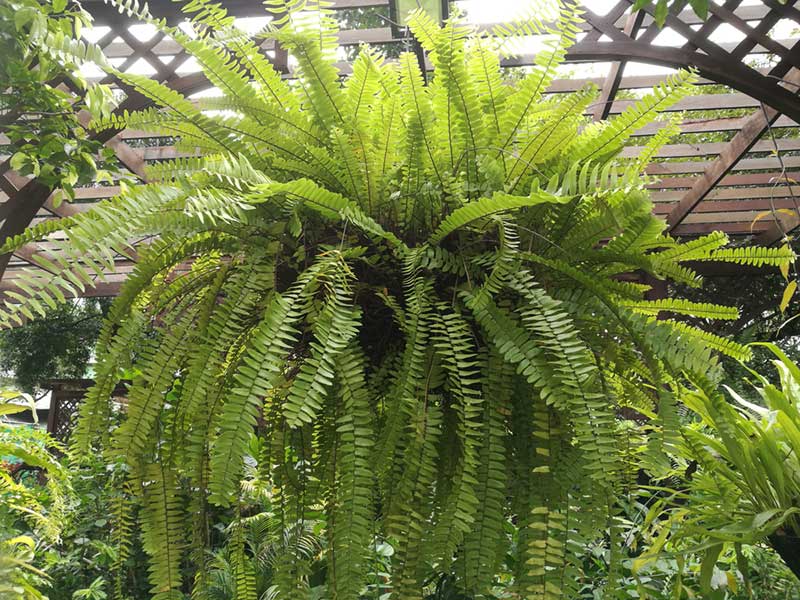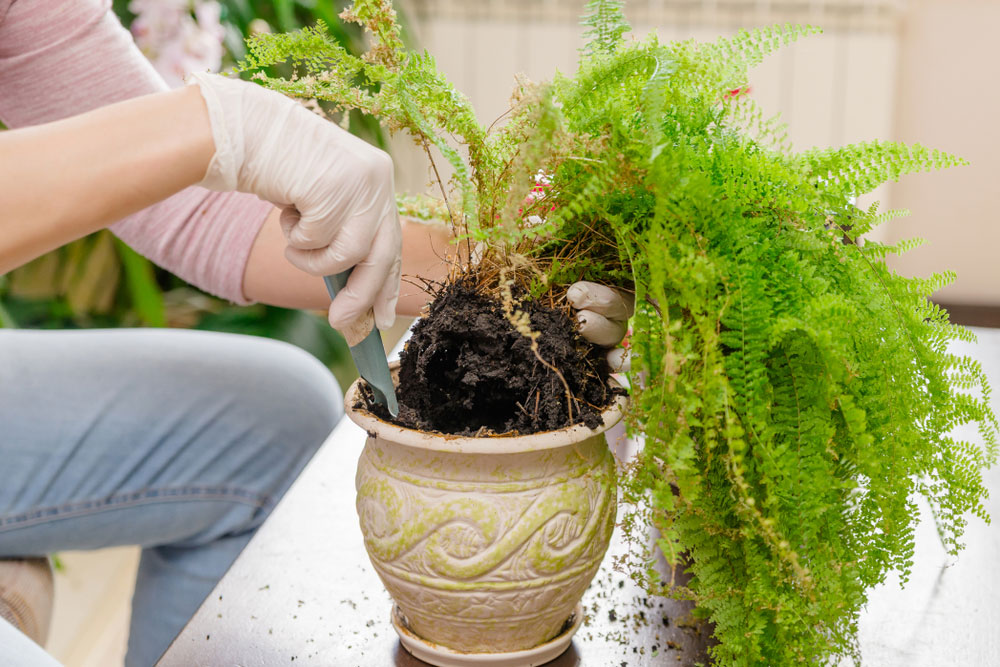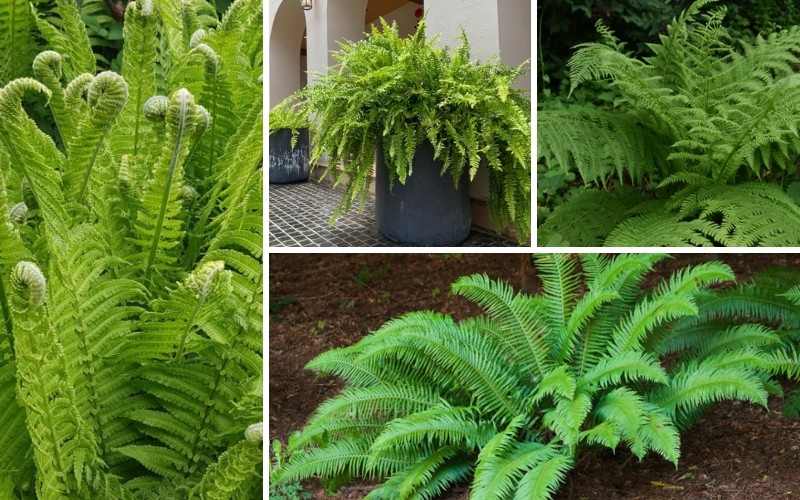
Ferns are an ancient plant, older than almost all other plant life besides moss. Their appearances in the fossil record dates back to nearly 400 million years ago.
Ferns can fill out a low-water shade garden or a bare spot in your yard. A fern also makes a beautiful houseplant or container plant indoors or out. They are perfect for filling in shaded parts of your yard or garden and add beauty to your home.
Most ferns grow well even in less than ideal conditions, making them a good choice for an inexperienced gardener.
Boston Fern (Nephrolepis exaltata)

The Boston fern is one of the most recognizable sword fern varieties because of its popularity as a houseplant. These ferns thrive in USDA zones 9-11 when grown outdoors, but they can live indoors anywhere. Soil aerated with peat moss makes an ideal growing medium for these ferns.
They prefer indirect light and partial shade, which makes them great for porches and patios. The lacy fronds will turn brown in too much sun, and low humidity will cause the fronds to turn yellow.
The bright green fronds can grow as long as 4 feet. These plants work best in a tall container or hanging pot that gives them room to drape over the side.
Lady Fern (Athyrium filix-femina)
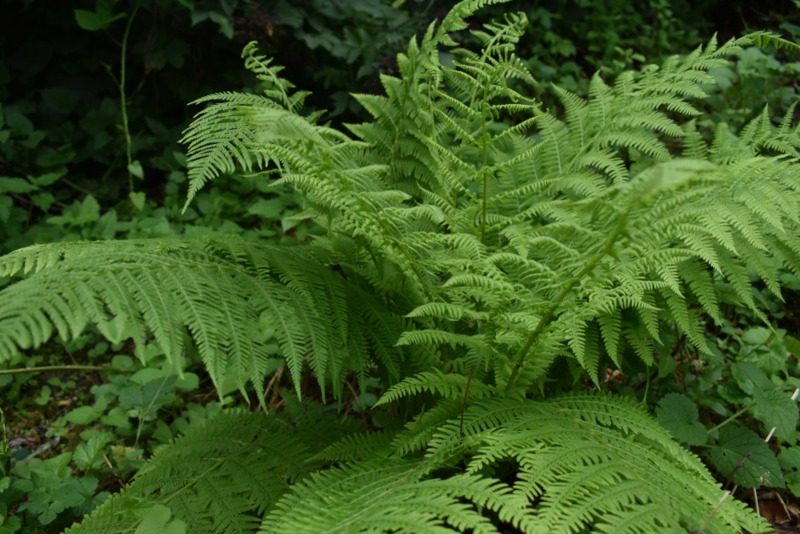
The lady fern comes from the wood fern family and has lacy fronds that like partial shade and moist but not wet soil. The rich green color is a favorite in shade gardens among hostas and other shade-loving plants. They grow well outdoors in USDA zones 5-9.
The fronds can reach up to 3 feet in length, so they make a good choice for houseplants that won’t get as bushy as some different types of ferns.
Western Sword Fern (Polystichum munitum)
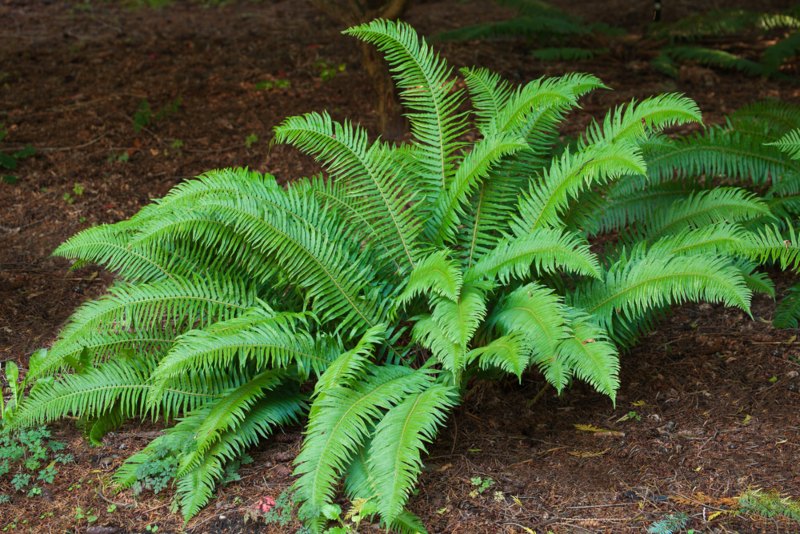
The Western Sword Fern grows best in USDA zones 5-9 with at least weekly watering and more in dry, hot weather. These ferns can reach up to 6 feet tall and make a striking appearance among more freeform plants and colorful flowers.
They grow in clumps from 3-6 feet wide and might need to be thinned to keep them from overtaking nearby plants. They prefer soil that’s well-drained and evenly moist. Like most types of ferns, they prefer filtered light and at least partial shade.
Kimberly Queen Fern (Nephrolepis obliterata)
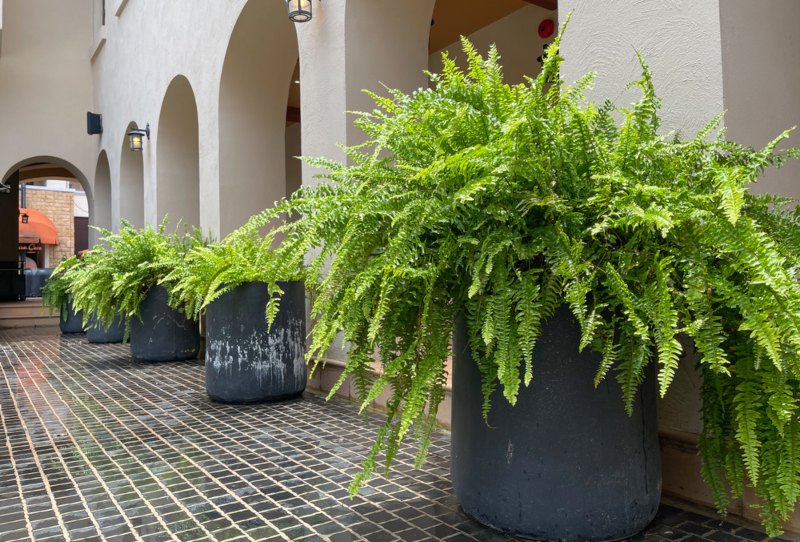
Native to Australia, the Kimberly Queen fern is a sword fern with fronds that can grow up to 3 feet tall. Outdoors, this fern grows well in USDA zones 9-11, and it does well in containers and as a houseplant.
These ferns tolerate the sun better than some other types of ferns, making them suitable for sunnier parts of your garden. Let the soil dry out between waterings when you keep it as a houseplant.
Bird’s Nest Fern (Asplenium nidus)
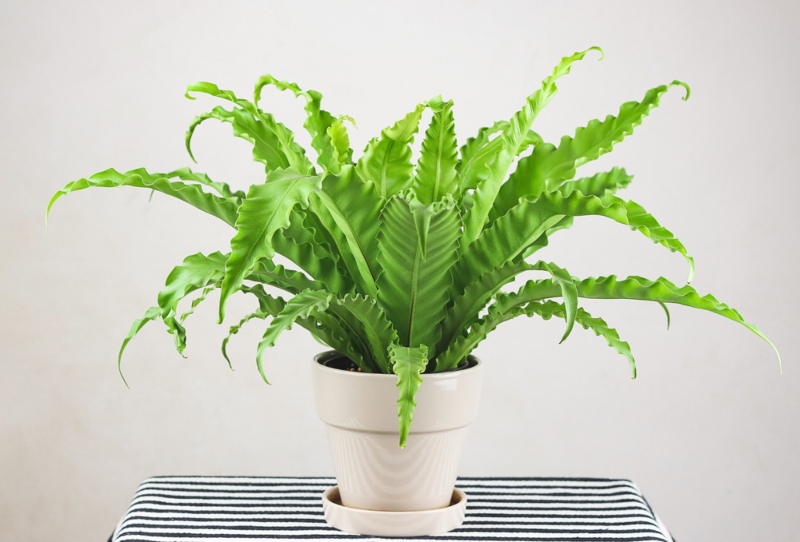
The best USDA zones for growing bird’s nest ferns are 11 and 12, though this fern makes an attractive houseplant in any climate. A mature fern’s fronds can reach lengths of up to 5 feet. As a houseplant, they usually won’t grow past 2 feet long.
This plant likes slightly acidic, moist soil, lots of humidity, and partial shade. Unlike ferns with lacy fronds, the bird’s nest fern’s fronds are long and solid. They grow from the center of the plant in a clump that looks like a bird’s nest, which is where the fern gets its name.
Autumn Fern (Dryopteris erythrosora)
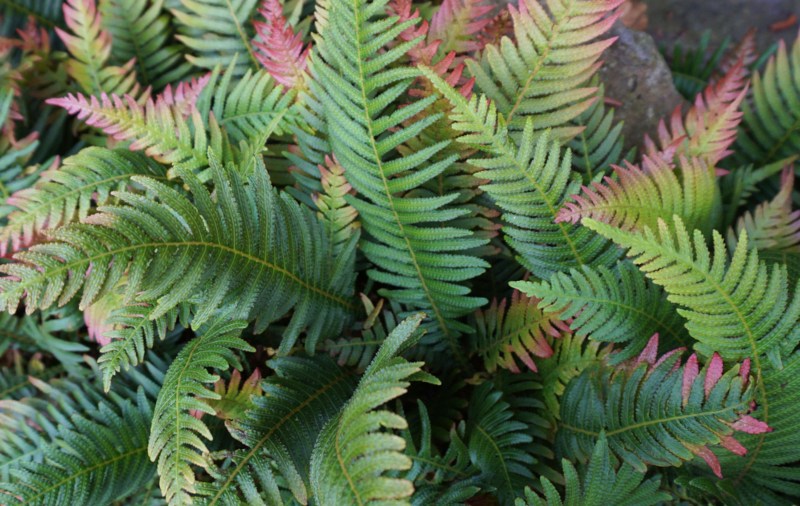
The autumn fern has papery fronds that are copper and red when they emerge but turn a deep green as the plant matures. This plant is one of the types of ferns that grows slowly to reach a maximum height of about 2 feet.
Autumn ferns grow best in USDA zones 4-9, working as a ground cover in garden spots that offer full shade where little else will grow. They also tolerate drought better than some other ferns.
Holly Fern (Cyrtomium falcatum)
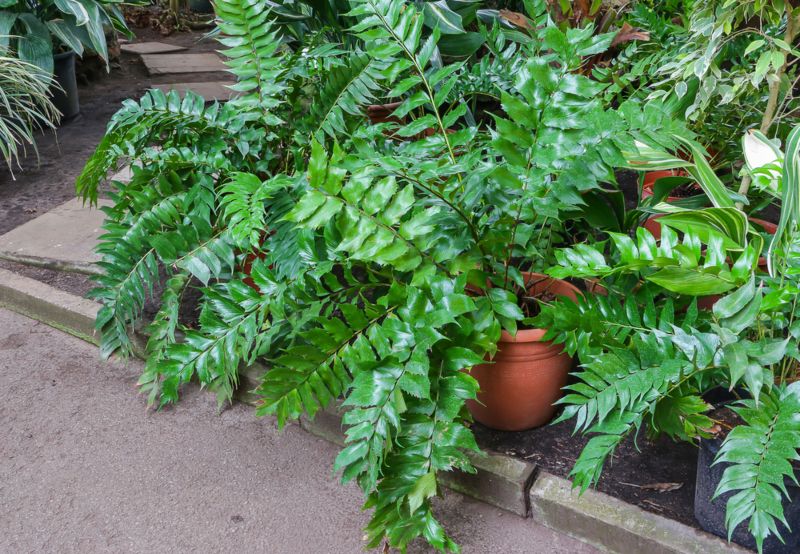
The holly fern gets its name from the pointed leaves that resemble holly leaves. This fern loves full shade and grows well in places that rarely or never get sunshine, making it a good ground cover. The fronds can reach up to 2 feet in length, so it’s a suitable houseplant variety.
This fern will grow in partial shade, but too much sun will stunt or kill it. It prefers acidic, well-drained soil.
Lemon Button Fern (Nephrolepis cordifolia)
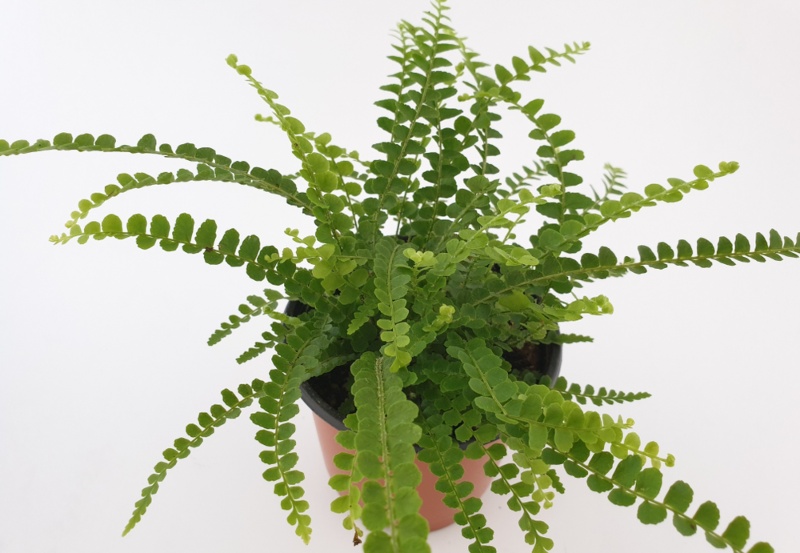
Lemon button ferns are a dwarf variety of Boston ferns. They grow well as a houseplant or in a container and usually don’t exceed 12 inches in height. Also called fishbone ferns, these plants can be planted outdoors in frost-free zones or treated as an annual in colder zones.
Overwinter them indoors if you plant them in containers. A pebble tray filled with water beneath the fern or a humidifier can provide the needed humidity indoors. Lemon button ferns grow slowly, so as a houseplant, they don’t need frequent repotting.
Western Maidenhair Fern (Adiantum aleuticum)
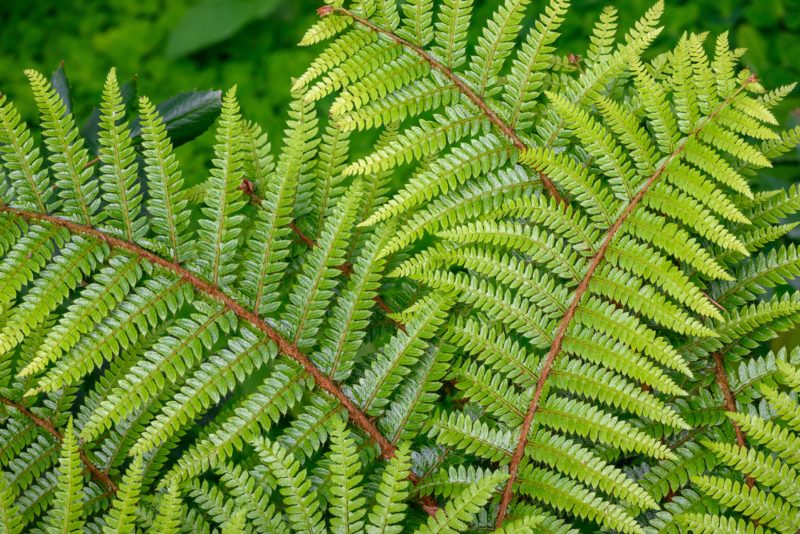
The Western maidenhair fern thrives in USDA zones 3-8. The frond pattern looks like spread fingers with dark spines that range from black to deep purple.
Partial shade and well-drained soil keep this plant healthy, but watch out for bright afternoon sun that can burn and damage the leaves. This fern grows up to 30 inches in height and width.
Ostrich Fern (Matteuccia struthiopteris)
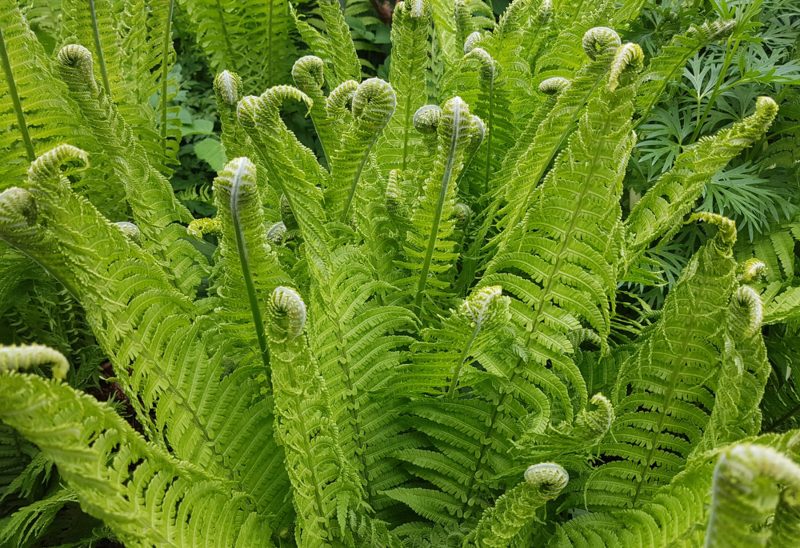
Ostrich ferns can handle wetter soil than many types of ferns and grow best in USDA zones 3-7. If the soil dries out between waterings, it’s too dry. Water this fern often in areas with infrequent rain.
This fern grows in clumps that can reach up to 4 feet high when the plant matures. The plant’s name comes from the appearance of the fronds that resemble ostrich feathers.
Conclusion
Ferns can provide beautiful foliage where nothing else will grow because there’s not enough sun.
You can plant one fern or combine different types of ferns to create the look you want. These plants are easy to care for, so as long as you plant them where they get the proper amount of shade. You’ll be able to enjoy their beautiful leaves throughout the growing season.





